Face-Off: Alice: Madness Returns
Through the looking glass.
The original American McGee's Alice found its home exclusively on the PC, with the planned PlayStation 2 port canned while still in development. The sequel may well be a day one multi-platform release, but that certainly doesn't stop it from headlining its most advanced graphical features solely on PC.
A look at our 720p console and PC comparison video reveals a variety of enhancements over the Xbox 360 and PlayStation 3 versions of the game. While there are still plentiful examples of low-quality artwork to be found throughout, additional higher resolution texture maps and water surface effects are deployed. Complementing this is the inclusion of a camera-based motion blur, along with a greater number of light sources present on screen at any one time, helping to give further depth to the scene. Image quality also gets a boost in the form of high levels of multi-sampling anti-aliasing, although direct comparisons with the PS3 version simply serve to highlight how good the MLAA implementation is.
The main talking point however, is the integration of NVIDIA's PhysX technology into the game. Available to those using NVIDIA cards exclusively, it offloads many complex physics calculations onto the GPU, allowing for a variety of enhanced effects.
On the most basic level, PhysX allows for more realistic collisions between smoke and particle effects: whether that's from the clouds puffing out from Alice's pepper grinder gun, or from the butterflies that surround her as she jumps and glides through the environment. Alice's hair in particular is outstanding; the way it is animated and how it flows and moves about in the breeze are particularly impressive - it's perhaps the most convincing hair animation we've seen in any game for a long time (this element is also present in the console versions).
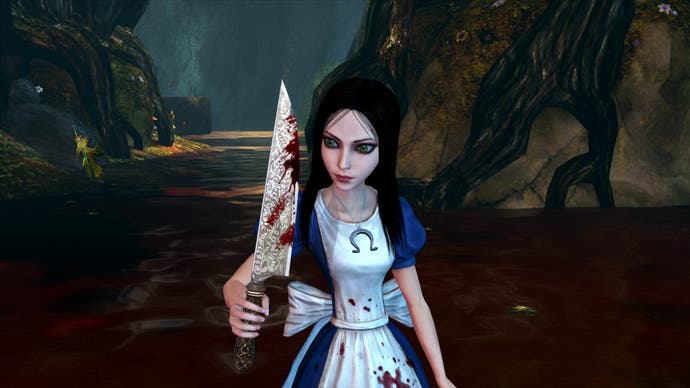
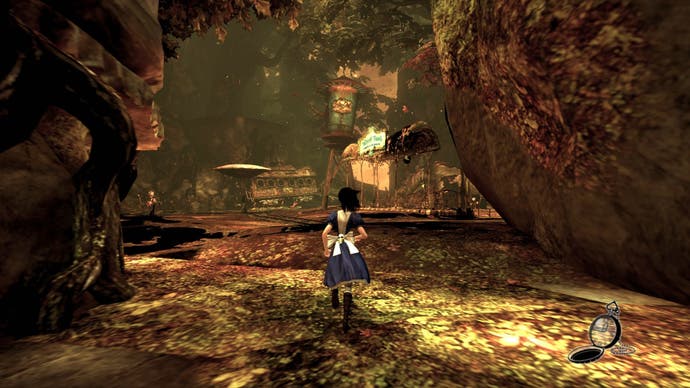
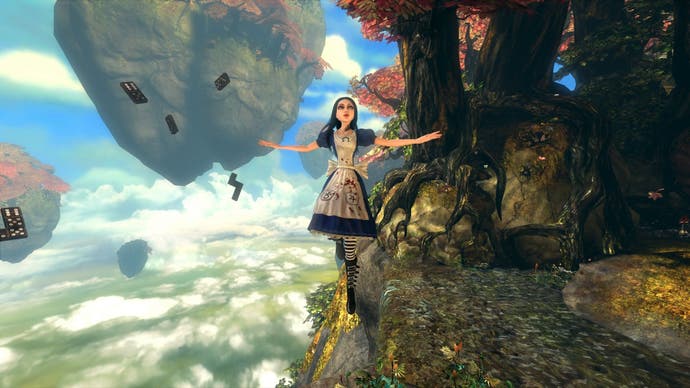
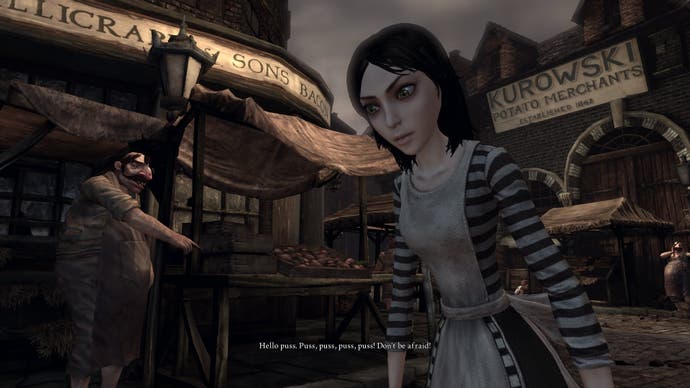
Beyond that, the use of PhysX acts as a way of tangibly connecting the various elements of the game world together in a much more realistic manner. Fluids such as the goop surrounding various enemies, for example, don't just appear, but interact believably with the environment. However this is perhaps a touch over-engineered for the small purpose it plays throughout the game, and in some places, it also doesn't quite fit in with the rest of the effects work.
Given the simplicity of the art and dated nature of the visuals, most people with a decent gaming PC would expect to run the game with all its added benefits at 720p60, largely without issue - we certainly did that with our i5 and GTX 460 set-up, which was a significant step up from the mostly 30FPS experience provided by the consoles. However, we found that stable 1080p performance on this set-up wasn't possible; we only managed a variable 30FPS baseline frame rate at best, a bit of a disappointment since the game doesn't seem to be that technically taxing in general.
For those looking to achieve 60FPS performance regardless of resolution, some additional tinkering is required that goes beyond the in-game menu settings. When we first booted the game up in 720p we were graced with a less than impressive capped 30FPS update, identical to console. The solution: a quick change to the Alice Engine.ini file (specifically 'MaxSmoothedFrameRate') from 30 to 60 unlocks the frame-rate cap, thus allowing the engine to render as many frames as your hardware configuration can keep up with. Quite why this wasn't incorporated into the graphical options is a bit of a mystery, as it makes a big difference to the way the game plays and in many ways, a higher temporal resolution is more important than the amount of pixels on the screen.
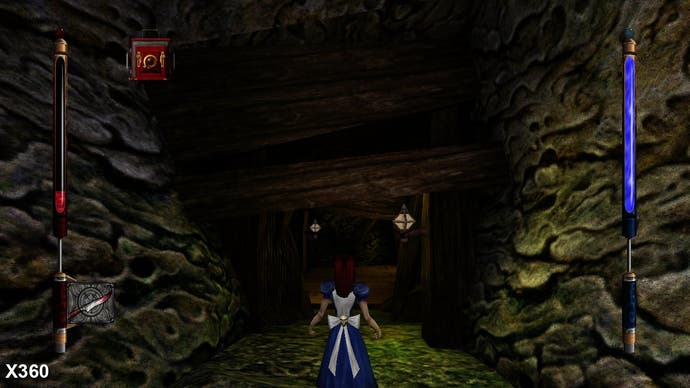



In terms of getting the very best image quality possible, the benefits of running in 1080p are obvious - everything looks noticeably sharper and subtle details are really brought out of the artwork. However, compared to visually more complex titles, the jump in resolution doesn't really translate into gains elsewhere with regards to the look of the game. Much of the core art does seem to look rather unsophisticated and increasing resolution doesn't help there.
Overall, Alice: Madness Returns is a little hit-and-miss from a technical perspective, but the game is also highly imaginative in terms of its artistic style, which draws you into the experience, making you eager to see what's coming next. The game design comes across as a little simplistic, and the visuals are more than a touch dated compared to other games powered by the Unreal Engine 3 - some of the low-res artwork can look a touch unsightly at times. For those who enjoyed the original and for newcomers looking for something a little different, Alice delivers some enjoyable platforming, but in terms of the game design, you can't help but feel that this is a big game with its best ideas spread out too thinly.
Across all formats, there's no doubt that the PC version is the most polished of the three, regardless of whether or not you have access to the exclusive NVIDIA PhysX features. In terms of the consoles, while both versions do come recommended, the final nod goes to the 360. MLAA may well give an image quality boost to the PS3 version, but owing to the nature of the art itself, the lack of edge-smoothing on the 360 game isn't that much of an issue. Similarly, while welcome, the Xbox's plus points - texture and effects improvements - aren't significant enough to weigh into any purchasing decision. However, performance is the key difference here, and that's where the Xbox 360 provides an advantage that translates into a tangibly more consistent gameplay experience.
Article by David Bierton.













